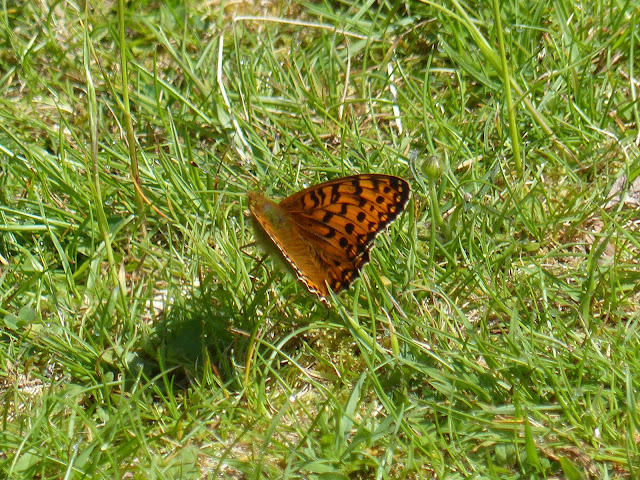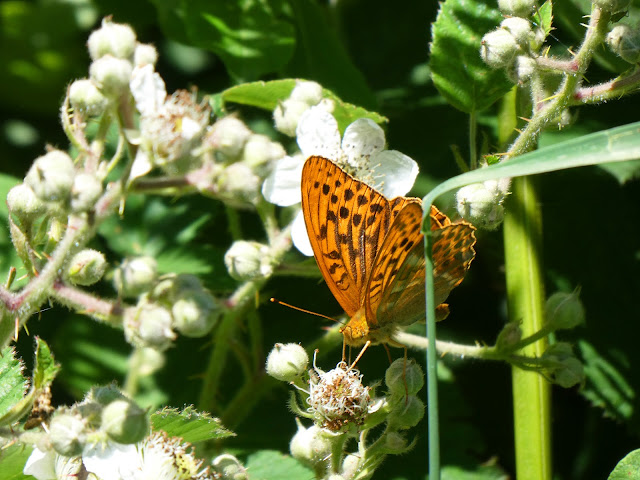This post follows on from my Swallowtail one and is the second of my posts about three species of butterfly, all new to us, that we saw during our recent time away in Norfolk.
David and I visited Holt Country Park for the first time. It was a very hot day in June, and we were grateful for the shade afforded by the woodland rides. We had barely left the car park when we saw the flutter of large orange wings, the large orange wings of our first ever Silver-washed Fritillary!
Several sightings followed thereafter, though the butterflies were very active and hard to catch on camera.
I believe this is only the second species of Fritillary I have ever knowingly seen, the first being the exquisite Pearl-bordered variety, which we encountered back in 2014 on the famous path to Hallaig on the tiny Inner Hebridean island of Raasay.
 |
| Pearl-bordered Fritillary, path to Hallaig, Raasay, 2014 |
 |
| 2014 Photoshop collage: Raasay with Fritillary |
I missed seeing the Fritillary David found in Galloway in 2018, but he let me post his photo here.
Our Fritillary sightings have been few and far between, and two have been north of the border. The word 'fritillary' makes me think not only of butterflies but of the Snakes-head Fritillary flower. I began wondering why these chequered butterflies and plants should share this name. What did it mean?
I did a bit of Googling (this article may not have answered my question, but it proved a fascinating read along the way), and discovered that while the word finds its origin in Latin, a derivation of it became the name for a 'dice-box' in the 1500s and 1600s. I wonder if some of these boxes from which dice were thrown were themselves made to look like large dice, with spot-marks ...
Update, 15 July 2022
I continued to ponder the nature of the dice-box and to wonder how the word fritillary in one of its forms must surely have indicated a feature that would link the appearance of the butterfly with the flower.
Help came from The Oxford English Dictionary, which cites a passage in J. Gerard's Herball of 1597. This passage suggests that what we recognise as the Fritillary flower was known as Frittillaria (as Gerard spelled it). Gerard proceeded to add that Frittillus (again, his spelling), a slightly different form of the word, was thought by some to refer to a chessboard comprising 'square checkers'. This last bit makes good sense to me as both butterfly and flower display a design similar to that of a chessboard.




2 comments:
What a beautiful butterfly. We’ll spotted
We really didn't have fritillary butterflies until the last ten years. I have only seen two kinds of them.
Post a Comment